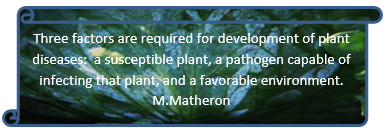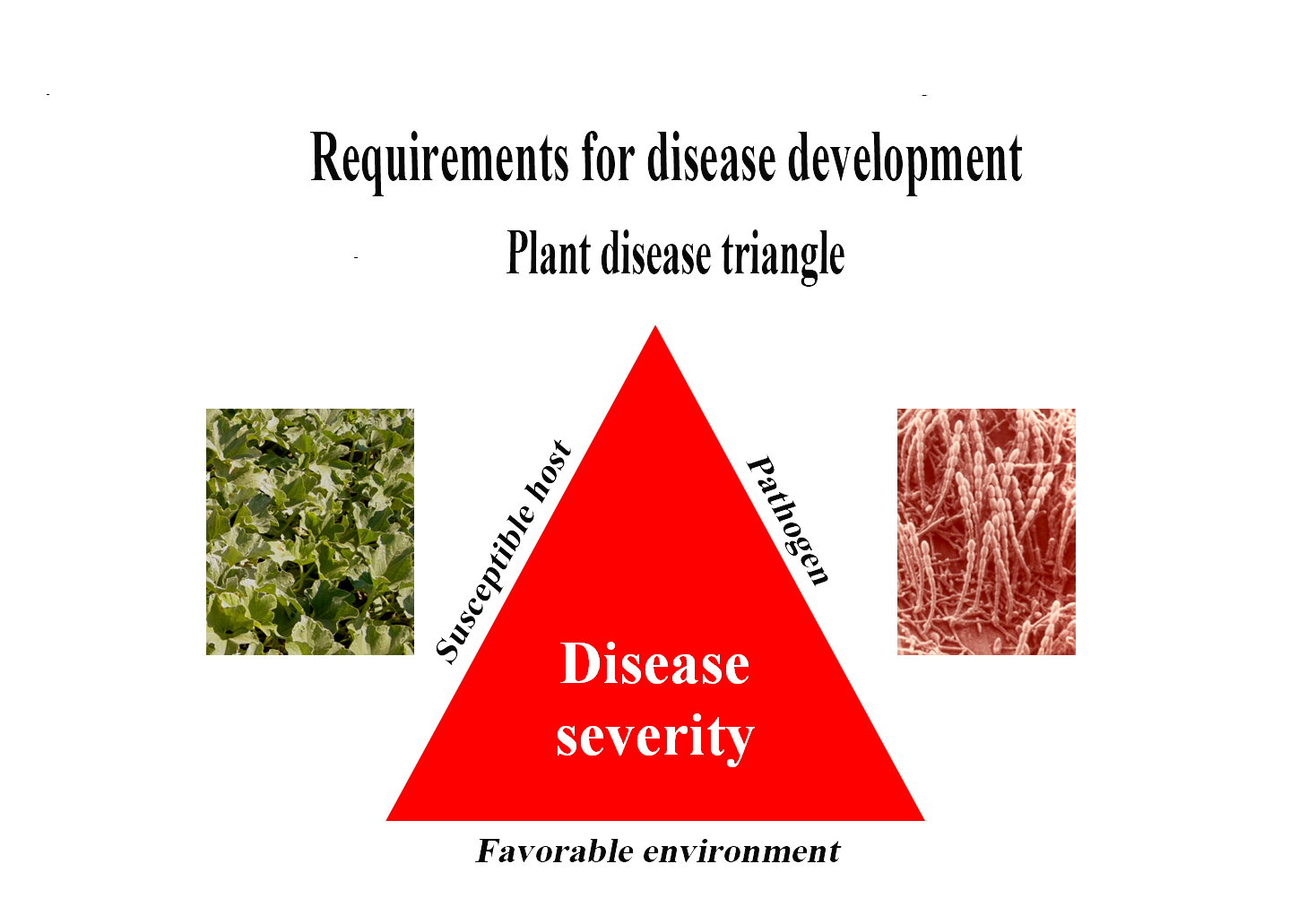
|
|
|
|

|
|||
|
|
|||
|
|
|||
|
Three factors are required for development of plant diseases: a susceptible plant,
a pathogen capable of infecting that plant, and a favorable environment. Temperature
and moisture are aspects of the environment that critically affect the development
and severity of diseases caused by bacterial and fungal pathogens. A plant disease
caused by these types of pathogens will not occur if temperature and/or moisture
levels prohibit the pathogen from interacting with the host plant to cause disease.
This explains why some diseases only appear during a particular time period during
the growing season of a particular crop. For example, Fusarium wilt on lettuce in
the desert is found primarily during the fall, but not during the winter months.
 
To contact Mike Matheron go to: matheron@ag.arizona.edu.
|
|||
| Back | |||
|
For questions or comments on any of the topics please contact Marco Pena at the Yuma Agricultural Center.
|
|||
|
Home |
Cotton | Veggies |
Forages | Grains
| Citrus |
Crop x Crop Insects | Diseases| Weeds | Pesticides | Economics | News | Weather | Research | Photos | Contacts | General Info. Copyright © 2001 University of Arizona, College of Agriculture and Life Sciences Webmaster: Al Fournier (acis@ag.arizona.edu) |
|||
